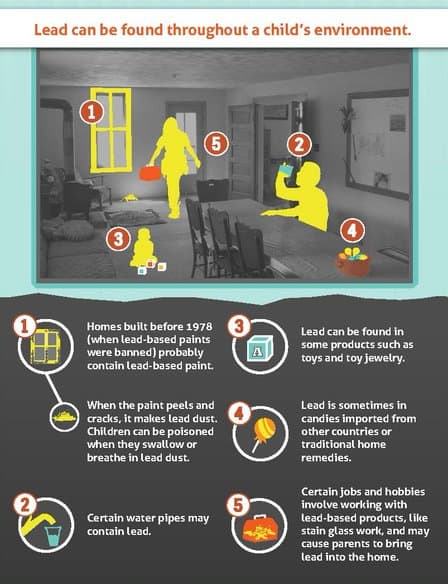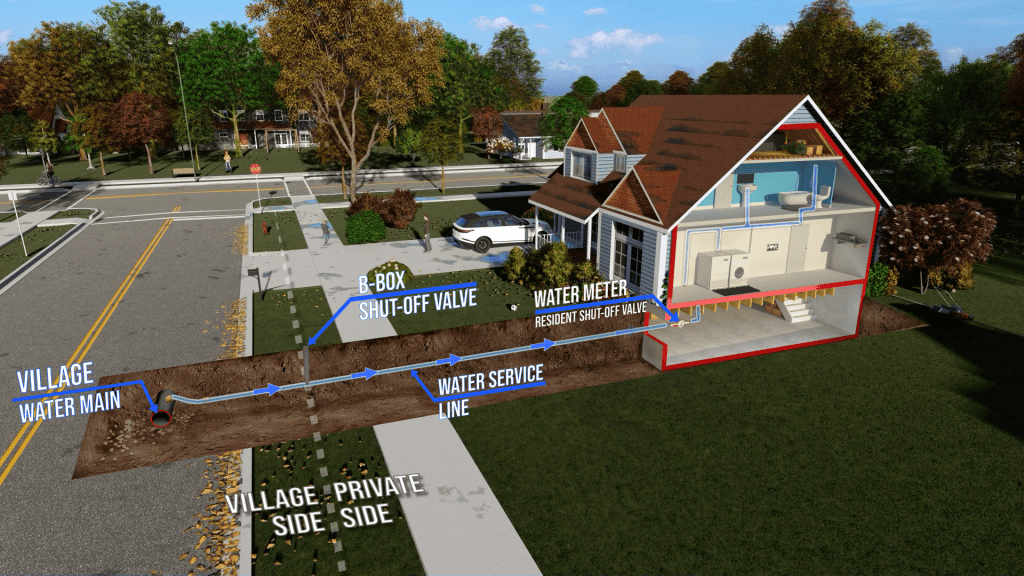What is Lead?
What are the Health Effects of Lead?
How Does Lead Enter Drinking Water?
Does the Village of Wilmette Test for Lead?
The Village performs testing at 30 sites with lead service lines every three years. Results from the last round of testing are below. Wilmette is in full compliance with the IEPA and USEPA.
| Date Sampled | Action Level (ppb) | 90th Percentile (ppb) | # of Sites over Action Level | |
|---|---|---|---|---|
| Lead | 2020 | 15 | 5 | 0 |
However, the Village does not offer testing at individual homes. If you want to test your water, IEPA maintains a list of Certified Labs for Analysis of Lead in Drinking Water, which can be found at epa.illinois.gov.
How Much Lead in Water is Too Much?
The EPA has created a lead action level of 15 parts per billion, which is the same concentration as one ounce in an Olympic swimming pool. All water systems must publish annual drinking water quality reports; find your local Consumer Confidence Report (CCR) at Consumer Confidence Reports or you can visit the Village’s website to see the Village’s Annual Water Quality Reports from past years: wilmette.gov.
What Does the Village of Wilmette Do to Protect my Household from Lead?
What Has Been Done to Reduce Lead in Drinking Water?
To see the current status of Wilmette’s inventory, click here.
Is Water the Only Source of Lead in Homes and Businesses?
How Do I Know if I Have a Lead Service Line?
Does My House Have Lead Plumbing?
What Can I Do to Reduce Lead Exposure from My Drinking Water?
- Filter the Water – Many home water filters are effective at removing lead. If you purchase a filter, make sure it is certified to NSF/ANSI 53 and NSF/ANSI 42 for lead reduction and that you maintain it properly. Find out more on filter certification at nsf.org.
- Run the Tap Before Use – Lead levels are likely at their highest when water has been sitting in a lead pipe for several hours. Clear this water from your pipes by running the cold water for 3-5 minutes before using. This allows you to draw fresh water from the Village’s water main. In efforts to conserve water, you can use this water on house plants or to flush toilets.
- Use Cold Water for Cooking and Drinking – Always cook and prepare baby formula with cold water, because hot water dissolves lead more quickly, resulting in higher levels in water.
- Clean Aerators – Aerators are small attachments at the tips of faucets which regulate the flow of water. They can accumulate small particles of lead in their screens. It is a good idea to remove your aerators at least monthly and clean them out.
Households with pregnant women, infants, or young children should be especially aware of the potential for lead exposure through drinking water.
Are There Steps I Can Take to Protect My Developing Baby, Infant, or Young Children?
Do All Home Filters and Other Water Treatment Devices Remove Lead?
Can My Pets Drink Water with Lead?
Is it Safe to Shower in Water that Contains Lead?
I’m in a New House. Am I at Risk?
Who Owns the Service Line?
What is the Village of Wilmette Doing to Assist Residents with Lead Service Line Replacements?
Considering a water service upgrade or replacement? Review this Lead Replacement Policy first.
Where Can I Find More Information?
- For information on lead in drinking water and steps you can take to minimize exposure, call the EPA Safe Drinking Water Hotline at 1-800-426-4791 or visit epa.gov/safewater/lead.
- For more information regarding sources of lead and health effects of lead exposure, visit the CDC at cdc.gov/nceh/lead.
- For local water quality information, visit the Village of Wilmette’s Annual Water Quality Report posted at wilmette.gov. If you would like to discuss the issue with a local contact, call the Public Works Department at 847-853-7500 from 7:00AM to 3:00PM, Monday – Friday.


